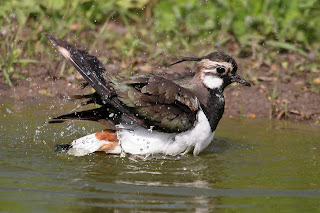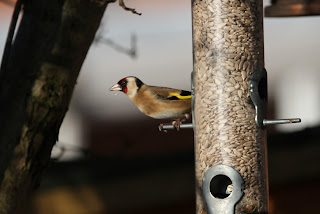 |
| Bittern by Ron Marshall |
Although I’ve been interested in nature and birds in particular for a decade or so, I suppose I could only call myself a “proper” birder for around the latter 2 ½ of those years. In the earlier years, there were always other hobbies and events taking priority, but a change in circumstances and going off to university gave me the time to finally put some proper effort in to birding. Since then, and even before then, one reserve in particular stands out. It’s probably one of the main reasons I’m a birder, and is a place I’ve grown to love.
Titchfield Haven is a lovely wetland reserve on the coast of Hampshire half way between Portsmouth and Southampton, stretching from the coast (Hill Head) almost up to Titchfield village, 4 miles inland. It’s the place I and a number of other local birders call our patch, and almost feels like a second home! And of course I have so many good memories – seeing my first Spoonbill; walking into a hide just in time for Mark to say “Quick, look through my ‘scope, the Bitterns’ showing!”…seconds later it disappeared back into the reedbed…the one and only time I’ve seen a Bittern on the reserve.
 |
| Greater Yellowlegs by Amy Robjohns |
Then there’s 2014, my first attempt of regular patch birding. It was an awesome year. I don’t think it could be described in any other way – Black-winged Stilt, Pallas’s Grasshopper Warbler, Lesser Yellowlegs, Siberian Stonechat… the latter 3 all in the space of 6 weeks; yes really, 6 weeks! Not only that, exactly 4 months after the Lesser Yellowlegs, a Greater Yellowlegs turned up (both on the 11th of the month coincidentally), at the start of 2015. 5 great finds by fellow local birders in just over 6 months in one small part of Hampshire. Not wanting them to feel left out, the Little Swift (seen by a few lucky birders) in September and Penduline Tits in December just add to the impressive list of rarities over the past 2 years. I’d like to think my time to stumble across a patch rarity will come, one day!
It’s not all about the rare birds, of course. There’s the scarcer species which may be common elsewhere, but feel so special on patch and the everyday species we probably take for granted. Rare birds aside, it’s these birds that make most patch visits worth it, even if at the time we moan about how quiet it is. Admittedly, much of the summer was spent thinking exactly that. Without the quiet days though, how can you enjoy those crazy or awesome moments?
 |
| Short-eared Owl by Amy Lewis |
The thing about patch birding is not giving up. I think that’s what this year in particular has taught me. Even when it seems quiet, day after day. If you give up, what if you miss that one day when something different does happen? If I’d given up on 23rd August after a fruitless morning, I wouldn’t have found the 5 Wood Sandpipers that dropped into North Scrape. It’s a similar story with the Great Grey Shrike, Short-eared and Tawny Owls, Roseate Tern, Black Redstart, and so many other species this year. Perseverance (and chance!) does pay off in the end.
 |
| Ringed Plover by Edmund Fellowes |
I can’t really write about patch birding without mentioning some of the commoner birds I’ve enjoyed and probably do take for granted. 2015 was the most successful year to date for Avocets – I believe close to 40 chicks fledged, and at times the total number of Avocets in the scrapes topped 100. Cetti’s Warblers are everywhere and the Bearded Tits, among other species, are a joy to watch. We have Mediterranean gulls too, and well, lots of wonderful birds (funny that)! Even the beach at Hill Head, outside of the reserve has its moments – the mix of Sanderling, Turnstones, Ringed Plovers and more in the winter, for example. This blog post would be far too long if I mentioned them all.
Having a local patch is a great thing to do if you don’t already. Firstly, having a place close to home you can visit give you a focus – an aim of seeing as much as you can at this site, and beating previous years’ totals. It’s interesting to gradually get to know what’s common, what’s “patch gold” and so on, and over time you’ll notice changes and trends. I’ve found it interesting chatting to other birders, who’ve been visiting the area for decades – they certainly have many tales to tell.
A local patch is also great for developing skills as a birder. Spending many hours mostly watching commoner species helps to get a good grounding, so when that something else turns up you’ll be ready to pick it out. Who knows, it could be you who finds the next mega on patch! It’s certainly helped me improve, especially as the locals are welcoming and encouraging!
I’m not sure there will be a repeat of these past 2 years, in terms of rare birds at least. That won’t stop me trying and living in hope though. Asides from becoming a birder, patch birding is probably one of the best things I’ve ever done. It’ll be interesting to see what happens as the years go by. Titchfield Haven well and truly has a place in my heart.
Where’s your local patch?
Amy Robjohns (
@Amythebirder)











